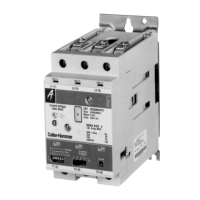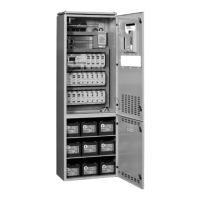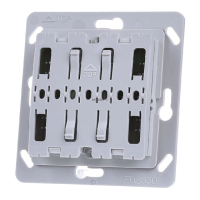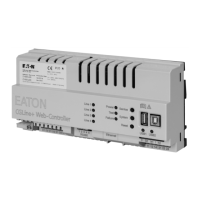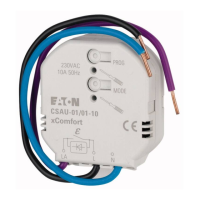IB01602009E For more information visit: www.eatonelectrical.com
Instruction Booklet
Effective: April 2006 Page 7
ATC-300 Automatic
Transfer Switch Controller
1.5.2.2 Optional Features
The following is a list of the optional features of the ATC-300
Controller.
12. Power Source Annunciation
This feature provides LEDs to give switch position and
power source availability indications.
Overcurrent Trip Indication
Available only with integral Overcurrent Protection
(Feature 16). (Shown on Automatic Transfer Controller Dis-
play.)
12L. Source 1 Tripped (Requires Feature 16) Via ATC-300 LDC-
Based Display
The Automatic Transfer Controller LCD display will read
“Lockout” if the Source 1 circuit breaker is in the “tripped”
position.
12M. Source 2 Tripped (Requires Feature 16) Via ATC-300 LDC-
Based Display
The Automatic Transfer Controller LCD display will read
“Lockout” if the Source 2 circuit breaker is in the “tripped”
position.
This feature provides Form “C” relay auxiliary contacts.
14. Relay Auxiliary Contacts
This feature provides Form “C” relay auxiliary contacts.
14G. Source 1 Present 1NO/1NC
This feature provides two NO and two NC contacts. The
relay is energized only when the Source 1 power source is
available.
14H. Source 2 Present 1NO/1NC
This feature provides two NO and two NC contacts. The
relay is energized only when the Source 2 power source is
available.
32F. In-Phase Transition
Provides In-phase transition, which is a feature that will
permit a transfer or re-transfer between 2 available sources
that have a phase angle difference of 8 degrees or less.
The In-phase transition feature includes permissible fre-
quency difference and synchronization time setpoints. In
the event source 1 and source 2 fail to synchronize within
the permitted frequency difference and time, the alarm
relay will energize and “Failed to Sync” will be displayed.
After resetting the alarm, another In-phase transition may
be initiated or a non-synchronized transfer may be
attempted or a non-synchronized transfer may be initiated
by failing the connected source. The adjustable frequency
difference is 0.0 to 3.0 Hz. If the synchronization does not
occur within a specified amount of time, the alarm relay
will energize and the failure will be logged into the Transfer
History as either “Sync Fail - Freq” or “Sync Fail - Phase”
depending on whether the frequency difference or the
phase difference was excessive.
Section 2: Hardware Description
2.1 General
The purpose of this section is to familiarize the reader with the
ATC-300 Controller hardware, its nomenclature, and to list the
unit’s specifications. The information presented is divided into
the following three parts:
• Operator Panel;
• Rear Access Area; and
• Specification Summary.
2.2 Front (Operator) Panel
The front panel, depending on the installation, is normally acces-
sible from the outside of a panel or door. The front panel pro-
vides a means to:
• Alert the user to specific conditions;
• Program the controller; and
• Set and monitor the operating parameters.
The ATC-300 Controller front panel serves two primary func-
tions: output and input. The output function consists of:
• A two-line, 16 character LCD display module
• Five LED outputs
1 Unit Status
2 Source 1 Available
3 Source 1 Connected
4 Source 2 Available
5 Source 2 Connected
There are seven input functions accessible through the pushbut-
tons:
1 Help/Lamp Test
2 Engine Test
3 Step/Enter
4 Increase
5 Decrease
6 Alarm Reset
7 Bypass Time Delay
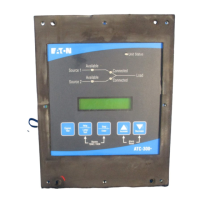
